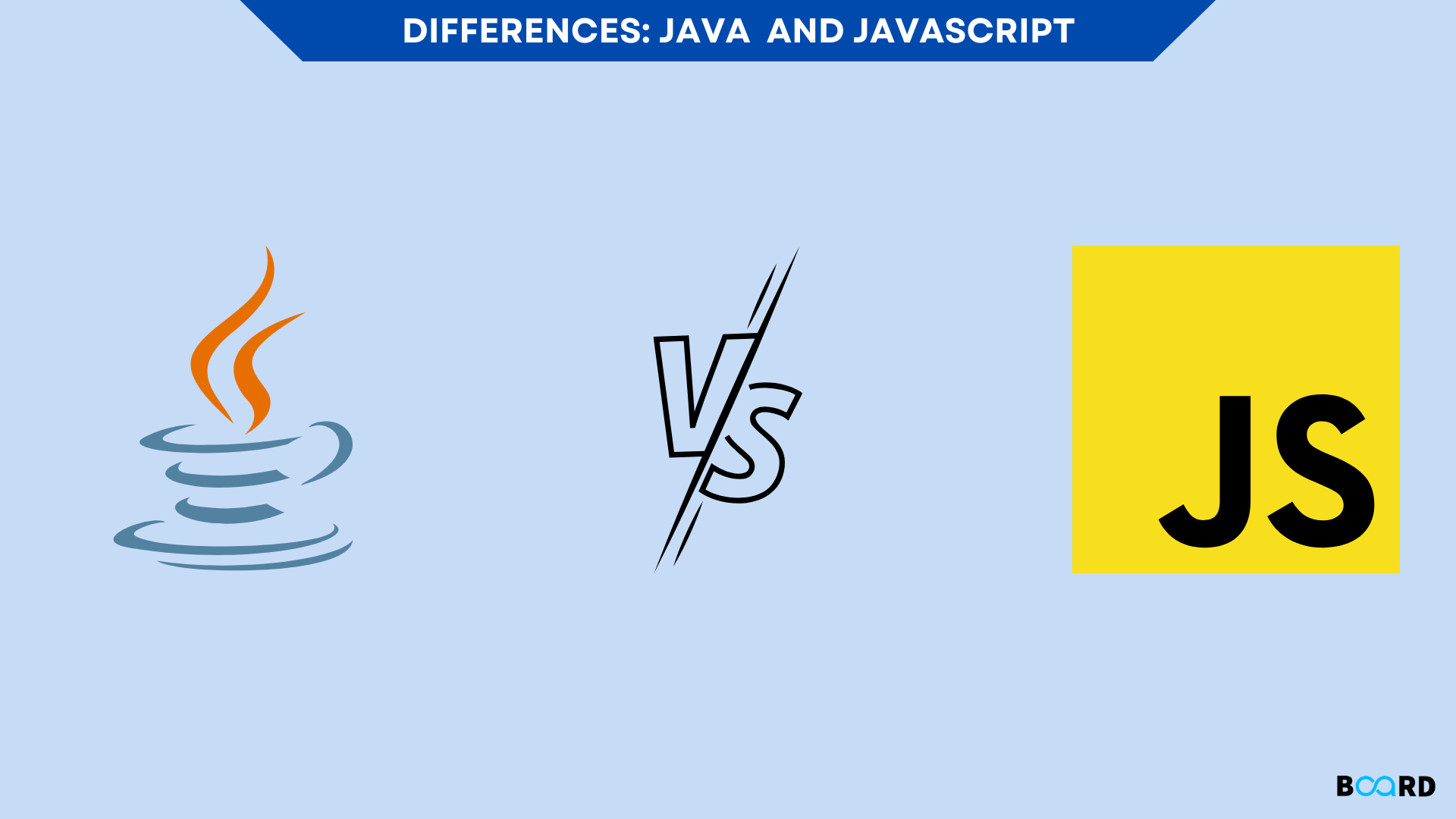JavaScript Fundamentals: Learning the Language of the Web
Java Vs Javascript: What's The Difference?

Introduction
What is Java?
Java is a general-purpose programming language that was created with a single guiding principle. Java is most frequently used in web development as a server-side language and as the preferred programming language for mobile apps. It still has a respectable front-end presence as a Java applet, despite the fact that this is out of style.
What is JavaScript?
One of the main three essential elements of the internet is regarded as being JavaScript. It is a scripting language that, in most cases, runs in the browser and adds dynamic and interactive features to web sites. Since the 2009 introduction of Node.js, it is now expanding as a server-side technology.
Java vs. JavaScript: Major Differences
When Sun first made Java available in 1991, it was primarily used to create software for consumer goods like VCRs. A client-side scripting language called JavaScript was developed to work with Java. Let's examine some of the main distinctions between these two languages in more detail.
- Compiled vs. Interpreted - JavaScript may be immediately understood by a browser, but Java is compiled into bytecode and executed on a virtual machine. JavaScript may now be compiled into efficient bytecode thanks to JIT compilation.
- Static vs Dynamic Type Checking - While JavaScript uses dynamic typing, where type safety is tested at runtime, Java uses static type checking, which verifies a variable's type at compile time. The main benefit of dynamic type checking is increased programmer productivity.
- Concurrency. JavaScript and Java handle the capacity to handle the execution of many instruction sequences at once quite differently. Java uses several threads to carry out tasks concurrently. Both approaches are perfectly adequate for the majority of use cases, although Java is often quicker since thread-to-thread memory sharing is quicker than interprocess communication.
- Class Based vs Prototype Based. In JavaScript, inheritance is a top-down, hierarchical connection in which a class's declared properties are passed down to a class instance (one of its members). Contrarily, Java uses class-based inheritance. By designating an object as a prototype with a function, hierarchy is achieved.
Java vs. JavaScript: Security
Due to the long existence of Java and JavaScript, both security experts and hackers have had numerous opportunities to identify the weaknesses in each language. Common Java security flaws consist of:
Java Security
- SQL injection is a flaw that happens when a web application neglects to clean up user input into forms and other UI elements. In order to execute SQL instructions on the back end of your web app, the attacker can submit a SQL query. Sanitizing user inputs inside your application is crucial to preventing SQL injection, and you should strictly stick to parameterized queries/prepared statements instead of utilizing dynamic database queries.
- XML injection attacks (XEE) are a known vulnerability of Java libraries that parse XML. The best way to prevent XEE is to manually limit the capabilities of your XML parsers. Proper configuration, encryption, and constant code scanning, can protect you against XEE.
JavaScript security
Typical JavaScript security flaws include:
- Cross-site scripting (XSS) attacks. When an XSS attack takes place, a content security policy (CSP) can watch for it, recognize it, and prevent it. Websites or web applications that do not adhere to the same origin policy are open to XSS attacks. Filtering user input as it comes in and encoding data as it leaves the system are the keys to preventing XSS.
- Code injection Web forms and other page elements are attacked by adding JavaScript or Node.js code. Because JavaScript is an interpreted scripting language, a hacker may easily take over a website. Best practices may significantly reduce the risk of injection attacks, such as whitelisting permitted characters and blocking all others.
Java vs. Javascript: Speed and performance
On the server-side of online applications, Java and JavaScript are more similar, making the comparison more accurate than in the past.
Java speed
When executed on a virtual computer, Java is inherently quicker than JavaScript since it is a compiled language. The issue of Java's built-in support for concurrency and multithreading still exists even after JavaScript filled that gap with JIT compilation. The downside is that it might be challenging to manage shared memory across threads.
JavaScript speed
With just one main thread of operation, JavaScript handles concurrency considerably differently from Java. Node.js relies on Node clustering, which forks child processes to carry out tasks in parallel. The biggest performance barrier between multithreaded languages like JavaScript and IPC
Points to Consider the language for your project
The decision basically comes down to what you're attempting to do and the resources you have available, just like with all languages. Java is a language that can construct anything, but JavaScript is still mostly a web technology.
When working on a project that requires...
- Applications for Android
- Business Software
- Scientific Computing
- General-Purpose Hardware
- server-side technologies for big data analytics
If your project involves..., you ought to think about JavaScript.
- Single-page dynamic apps (SPAs)
- jQuery, AngularJS, Backbone, Ember, and React are examples of front-end technologies.
- technologies used on the server, such as Node, MongoDB, Express, etc.
- Development of mobile apps using PhoneGap, React Native, etc.
